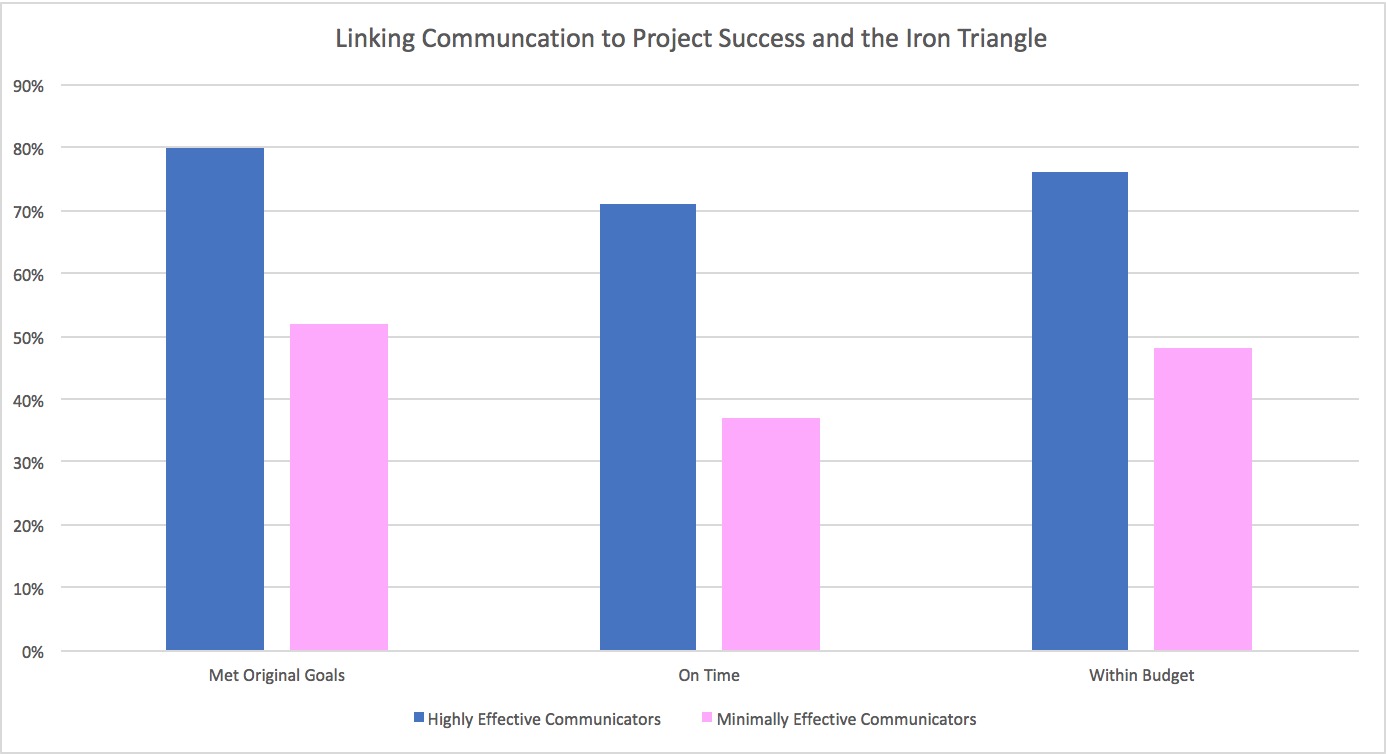Six Thinking Hats
| Line 3: | Line 3: | ||
The ''Six Thinking Hats'' is a group thinking exercise developed by Edward de Bono and was published in 1985. The discussion technique, born from the common phrase 'putting on your thinking cap', is used to structure and plan thinking processes, promote lateral thinking and encourage exploration through brainstorming. Several coloured hats are used and rotated during group discussions and meetings to symbolically represent particular modes of thinking (for example: objective, subjective, positive, negative, internal, external) and safely enables group members to explore these thinking modes. The hats method helps to streamline project, program and portfolio decision making by improving the efficiency and effectiveness of group discussions and meetings. | The ''Six Thinking Hats'' is a group thinking exercise developed by Edward de Bono and was published in 1985. The discussion technique, born from the common phrase 'putting on your thinking cap', is used to structure and plan thinking processes, promote lateral thinking and encourage exploration through brainstorming. Several coloured hats are used and rotated during group discussions and meetings to symbolically represent particular modes of thinking (for example: objective, subjective, positive, negative, internal, external) and safely enables group members to explore these thinking modes. The hats method helps to streamline project, program and portfolio decision making by improving the efficiency and effectiveness of group discussions and meetings. | ||
| − | In the context of project, program and portfolio management, effective communication is a core competency and is essential at all levels of work. When the proper communication tools and techniques are employed, stakeholders and project teams remain engaged and motivated. According to the 2013 PMI report '''The Essential Role of Communications''', poor communication drastically increases the risk of project failure and accounts for more than half of projects that fall short of intended business goals. Furthermore, "One out of five projects is unsuccessful due to ineffective communications" (PMI, 2013). [[File:Iron Triangle - Communication.jpeg| | + | In the context of project, program and portfolio management, effective communication is a core competency and is essential at all levels of work. When the proper communication tools and techniques are employed, stakeholders and project teams remain engaged and motivated. According to the 2013 PMI report '''The Essential Role of Communications''', poor communication drastically increases the risk of project failure and accounts for more than half of projects that fall short of intended business goals. Furthermore, "One out of five projects is unsuccessful due to ineffective communications" (PMI, 2013). [[File:Iron Triangle - Communication.jpeg|right|right|alt=A draft chart.|Communication vs Project Success Criteria]] |
... more about facts and figures.. | ... more about facts and figures.. | ||
Revision as of 15:39, 26 February 2018
Contents |
Overview
The Six Thinking Hats is a group thinking exercise developed by Edward de Bono and was published in 1985. The discussion technique, born from the common phrase 'putting on your thinking cap', is used to structure and plan thinking processes, promote lateral thinking and encourage exploration through brainstorming. Several coloured hats are used and rotated during group discussions and meetings to symbolically represent particular modes of thinking (for example: objective, subjective, positive, negative, internal, external) and safely enables group members to explore these thinking modes. The hats method helps to streamline project, program and portfolio decision making by improving the efficiency and effectiveness of group discussions and meetings.
In the context of project, program and portfolio management, effective communication is a core competency and is essential at all levels of work. When the proper communication tools and techniques are employed, stakeholders and project teams remain engaged and motivated. According to the 2013 PMI report The Essential Role of Communications, poor communication drastically increases the risk of project failure and accounts for more than half of projects that fall short of intended business goals. Furthermore, "One out of five projects is unsuccessful due to ineffective communications" (PMI, 2013).... more about facts and figures..
PROJECT INTEGRATION MANAGEMENT Project Integration Management includes the processes and activities to identify, define, combine, unify, and coordinate the various processes and project management activities within the Project Management Process Groups. In the project management context, integration includes characteristics of unification, consolidation, communication, and integrative actions that are crucial to controlled project execution through completion, successfully managing stakeholder expectations, and meeting requirements. Project Integration Management includes making choices about resource allocation, making trade-offs among competing objectives and alternatives, and managing the interdependencies among the project management Knowledge Areas. The project management processes are usually presented as discrete processes with defined interfaces while, in practice, they overlap and interact in ways that cannot be completely detailed in the PMBOK® Guide. Figure 4-1 provides an overview of the Project Integration Management processes, which are as follows: 4.1 D evelop Project Charter—The process of developing a document that formally authorizes the existence of a project and provides the project manager with the authority to apply organizational resources to project activities.
4.1 Develop Project Charter Develop Project Charter is the process of developing a document that formally authorizes the existence of a project and provides the project manager with the authority to apply organizational resources to project activities. The key benefit of this process is a well-defined project start and project boundaries, creation of a formal record of the project, and a direct way for senior management to formally accept and commit to the project. The inputs, tools and techniques, and outputs for this process are shown in Figure 4-2. Figure 4-3 depicts the data flow diagram of the process.
The project charter establishes a partnership between the performing and requesting organizations. In the case of external projects, a formal contract is typically the preferred way to establish an agreement. In this case, the project team becomes the seller responding to conditions of an offer to buy from an outside entity. A project charter is still used to establish internal agreements within an organization to assure proper delivery under the contract. The approved project charter formally initiates the project. A project manager is identified and assigned as early in the project as is feasible, preferably while the project charter is being developed and always prior to the start of planning. The project charter should be authored by the sponsoring entity. The project charter provides the project manager with the authority to plan and execute the project. It is recommended that the project manager participate in the development of the project charter to obtain a foundational understanding of the project requirements. This understanding will better allow for efficient resources allocation to project activities.
Projects are initiated by an entity external to the project such as a sponsor, program or project management office (PMO) staff person, or a portfolio governing body chairperson or authorized representative. The project initiator or sponsor should be at the level that is appropriate to procure funding and commit resources to the project. Projects are initiated due to internal business needs or external influences. These needs or influences often trigger the creation of a needs analysis, feasibility study, business case, or description of the situation that the project will address. Chartering a project validates alignment of the project to the strategy and ongoing work of the organization. A project charter is not considered to be a contract, because there is no consideration or money promised or exchanged in its creation. 4.1.1 Develop Project Charter: Inputs 4.1.1.1 Project Statement of Work The project statement of work (SOW) is a narrative description of products, services, or results to be delivered by a project. For internal projects, the project initiator or sponsor provides the statement of work based on business needs, product, or service requirements. For external projects, the statement of work can be received from the customer as part of a bid document, (e.g., a request for proposal, request for information, or request for bid) or as part of a contract. The SOW references the following: • Business need. An organization’s business need may be based on a market demand, technological advance, legal requirement, government regulation, or environmental consideration. Typically, the business need and the cost-benefit analysis are contained in the business case to justify the project. • Product scope description. The product scope description documents the characteristics of the product, service, or results that the project will be undertaken to create. The description should also document the relationship between the products, services, or results being created and the business need that the project will address. • Strategic plan. The strategic plan documents the organization’s strategic vision, goals, and objectives and may contain a high-level mission statement. All projects should be aligned with their organization’s strategic plan. Strategic plan alignment ensures that each project contributes to the overall objections of the organization.
4.1.2.2 Facilitation Techniques Facilitation techniques have broad application within project management processes and guide the development of the project charter. Brainstorming, conflict resolution, problem solving, and meeting management are examples of key techniques used by facilitators to help teams and individuals accomplish project activities.
4.2.2.2 Facilitation Techniques Described in Section 4.1.2.2. Facilitation techniques have broad application within project management processes and are used to guide the development of the project management plan. Brainstorming, conflict resolution, problem solving, and meeting management are key techniques used by facilitators to help teams and individuals achieve agreement to accomplish project activities.
Methodology
The main underlying principal of the thinking hats method is parallel thinking, a system where group members can discuss different points of view in isolation, and without interference from other types of thinking. De Bono believed that the brain could not think critically and make judgements efficiently and effectively because it was constantly analysing from multiple perspectives simultaneously. De Bono believed that by creating a common lens for discussion and by isolating each perspective, the entire group can properly discuss all components of an issue, creating a cooperative exploration. De Bono acknowledges that his method is not the natural way of thinking for some but that it enables groups to properly address and investigate all points of view and perspective in depth and in parallel. In this way the Six Think Hats method creates a practical method from which to conduct constructive thinking, thereby eliminating adversarial thinking, conflicts and drifting discussions.
The thinking hat method address the notion that when the brain is thinking, it is simultaneously interpreting, judging, translating, forming, confirming and dismissing. The method allows for a simpliefied and unbundled approach to approaching discssions and decision making by seperating each persepctive of the thinking, thereby enabling complete concentration and transparency.
Furthermore, the thinking hat method builds upon simplified thinking through the theory that chemical balances inside the brain are different when thinking critically, creatively, positively and negatively; and that the brain is ineffective at looking through each lens simultaneously. By separating out the individual thinking focuses for group discussions, holistic discussions, efficient ideation and better decisions can be made.
Similarly, the thinking hats method also removes personal attack from the realm of ideation and discussions, which can often lead to negative and unproductive work. By referring to responses as a particular type of thinking, you are referring to the brain instead of a person and who they are, which is an easy and effective way to approaching discussions, responses and feedback without insulting or offending others.
Finally, the thinking hat method acknowledges that group discussion participants are unlikely to investigate and pursuit topics, ideas and solutions that they do not instinctively like or agree with, hence creating sub-optimal ideation and decision making. The hats method removes prejudice, personal opinion and tendencies from group discussions and decision making by ensuring that all members of group discussions give a responses and performances based on the particular colour of the hat they are wearing, responses they might not necessarily naturally give. By challenging the natural thinking mode of individuals through the different hats, discussion members can often find themselves challenged, persuaded and even convinced of ideas, topics and solutions that they would not naturally have decided themselves.
According to the PMBOK Guide section 9.4, "Team management involves a combination of skills with special emphasis on communication, conflict management, negotiation...". Section 9.4.2.3 goes further to describe that "Conflict is inevitable in a project environment", can be due to individual communication, thinking and work styles; and that "solid project management practices, like communication planning and role definition, reduce the amount of conflict". The thinking hats method for group discussions and decision making is a tool and technique that allows for all communication, thinking and work styles to be heard during discussions, whilst simultaneously de-personalising feedback by reframing it in terms of 'hat thinking'.
Furthermore, the PMBOK Guide section 10 discusses how project managers spend large amounts of time in communication with internal and external team members and stakeholders for discussions and decision making, each with their own personal and professional lens and expectation. The thinking hats method of ideation, communication, discussion and decision making enables project managers to bridge the gaps between levels of expertise, perspective, interests, cultural and organisational backgrounds "which impact or have an influence upon the project execution or outcome." (PMBOK, ...)
Method
The Six Thinking Hat technique is driven by the premise of six imaginary hats, each with a different 'mode' of thinking and colour. Each coloured hat is then worn by each member during group discussions, and they can only operate in that particular 'mode'. When it is time to switch hats, everyone must do so, and by doing so switch thinking modes. The hats can be interchanged in any order and the method only works when every in thinking in the same 'mode' at the same time.
MAKE THIS MORE OF A METHOD FROM A RECIPE
Red Hat
The red hat is used to explore the emotional perspective of a project, program or portfolio. Th wearer is usually intuitive and instinctive and will usually rely on their gut reactions, feelings, emotions and instincts for the discussion. The wearer will not provide any justification for their responses and can often be persuaded during the course of the discussion as feelings can change.
Typical questions asked by red hat wearers:
What is your first impression of the scenario?
How do you feel about the scenario?
What are your initial thoughts on how to resolve it?
Yellow Hat
The yellow hat is used to explore the optimistic persepctive of a project, program or portfolio. The wearer will be optimistic and always thinking about the benefits. Typically the wearer will try to identify the positive aspects of the project/program/portfolio and will provide logical reasoning for them. Yellow hat thinkers are also seeking harmony within the discussion.
Typical questions asked by yellow hat wearers:
What are the strengths/positive points?
What is working well?
How will it help?
What are the benefits / opportunities?
Blue Hat
The blue hat is used to explore the managing perspective of a project, program or portfolio. It is used to discuss process control and typically the wearer of the blue hat is trying to organise the thinking and plan for action, they will ask questions, ask for summaries, conslusions and decisions.
Typical questions asked by blue hat wearers:
In what order should team members share their perspectives?
What decisions have we reached?
Green Hat
The green hat is used to explore the creativity persepctive of a project, program or portfolio. It is used to enable outside the box thinking and typically the wearer will provoke others and i´nvestigate ideas or thóughts. The wearer of the green hat usually comes up with alternatives, ideas and solutions to black hat problems.
Typical questions asked by green hat wearers:
What are some ways to work this out?
What are other ways to solve the problem?
White Hat
The white hat is used to explore the facts of a project, program or portfolio. The wearer of the white hat will only use available information in their assessments and discussions and will remain neutral and objective.
Typical questions asked by white hat wearers:
"What are the facts?"
"What do I know?"
"What do I need to know?"
"How will i get the information I need?"
What is relevant? Important?
Black Hat
The black hat is used to explore the cautious perspective of a project, program or portfolio. The wearer will typically think of the risks, challenges, obstacles and barriers. The black hat thinker will provide logical reasons for their concerns and is generally conservative, practical and realistic in their responses.
Typical questions asked by black hat wearers:
Why will this not work?
What is wrong?
What are the weaknesses / negative points?
What are the challenges?
Application / Uses
With 6 clear and different modes of thinking established, distinct thinking strategies can then be applied to different stages of project, program and portfolio management.
In any parallel thinking process task, the blue hat should start and end the process enabling a clear process of the how to think and organise, the decisions made and the conclusions. Other thinking hats can then be applied in any order and repeated in order depending on particular focus within the project, program or portfolio.
Classical examples set out on Dr De Bono's book include:
Initial Ideas – Blue, White, Green, Blue
Choosing between alternatives – Blue, White,(Green), Yellow, Black, Red, Blue
Identifying Solutions – Blue, White, Black, Green, Blue
Quick Feedback – Blue, Black, Green, Blue
Strategic Planning – Blue, Yellow, Black, White, Blue, Green, Blue
Process Improvement – Blue, White, White (Other peoples views), Yellow, Black, Green, Red, Blue
Solving Problems – Blue, White, Green, Red, Yellow, Black, Green, Blue
Performance Review – Blue, Red, White, Yellow, Black, Green Red, Blue
Benefits
1. Creates awareness of multiple perspectives and points of view
2. Creates a safe space to discuss issues without predjudice
3. Enables mechanisms to switch gears and thinking
4. Promotes focussed thinking
5. Improves communication
6. Improves decision making
7. Improves creativity of solutions
Limitations
The methodology behind the Six Thinking Hats, whilst sound and with many successful applications in history (notably Speedo in 2009 after their swimsuits were banned post the 2008 Summer Olympics), has limitations.
Firstly, the process is very time consuming and involves preparation as participants may not be familiar with the task and will need to be guided.
Secondly, the amount of time spent with each hat should be monitored and limited as the majority of hats will not be a natural mode of thinking for the participants. Some participants may feel uneasy and uncomfortable during the process which can lead to counter-productivity.
Thirdly, participants will each have their preferred brainstorming technique and would rather perform the activity alone as opposed to an open group forum.
Finally, the Six Thinking Hats method is an open setting discussion tool and conflicts between differing perspectives may arise during application of the technique.
Modern Interpretations
Some consultancies have proposed versions that augment the thinking hats into professions (doctor, engineer, lawyer etc), internal company hierarchies (employee, middle level manager, office, CEO, board), stakeholder groups or customer groups.
Further Reading
"The Five Stages of Thinking" is another ideation and communication tool related to the Six Thinking Hats, developed by Edward De Bono in 1973. The Five Stages of Thinking was developed for the Cognitive Research Trust (CoRT) Thinking Program' and further explores the strength of perceptive thinking and that thinking is a skill that can be developed.
References
Pulse of the Profession™ In-Depth Report: The Essential Role of Communications, PMI, 2013. Results based on interviews conducted in March 2013 among 742 full-time project management practitioners with three or more years of project management experience, and among 148 executive sponsors and 203 business owners who have been involved in large capital projects with total budgets of US$250,000 or more in the past three years and are within organizations with a minimum of 1,000 employees worldwide.
Insights and Trends: Current Portfolio, Programme, and Project Management Practices, PwC, 2012. Results based on 1,524 respondents, including project managers, program managers and executive managers across 38 countries






